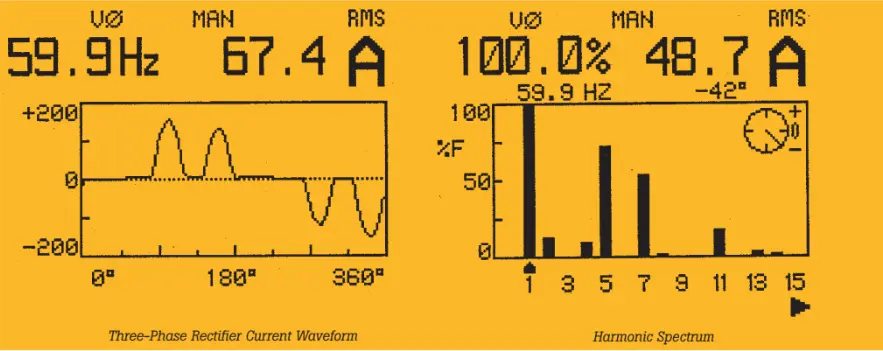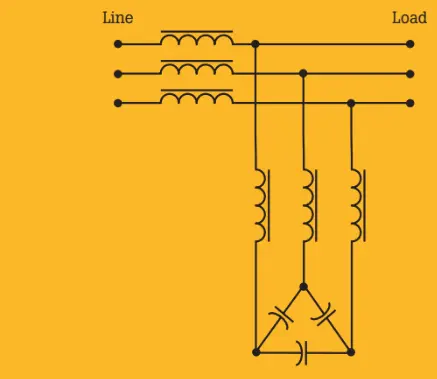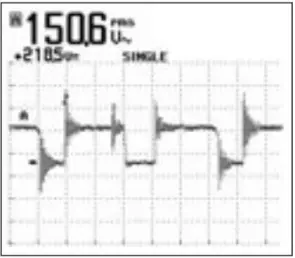Understanding harmonics and motor problems can improve system reliability:-
The pulse-width modulated (PWM) motor drive has become the ac variable speed drive method of choice, especially for low to medium-horsepower applications.
The technology has distinct advantages over other configurations in that it is typically less costly, more efficient, and produces fewer harmonic problems for the input power lines. It also can be tricky to troubleshoot.
To gain a better understanding of the problems typically encountered with PWM drives.
Table of Contents:-
First, let’s examine the basic building blocks of a variable speed drive. Its circuit is straightforward: the input circuit contains a full-wave diode bridge that rectifies the line voltage and charges a capacitor bank to a dc voltage equal to the halfwave peak of the line voltage.
The drive’s output stage contains some fast-switching power transistors that chop the dc into a series of narrow voltage pulses that are applied to the motor leads.
The height of the pulses is the same as the dc value on the capacitor bank, but the width of the pulses is modulated (or varied) in such a way that motor current approximates a sine wave.
The drive circuit can be very efficient because neither the input diodes nor the output transistors generate much heat.
In general, problems with variable-speed motor drives can be separated into two parts:
- Power line harmonics generated by the drive’s input circuit
- Motor difficulties caused by the output circuit
If we are going to tame the variable speed drive circuit, we need to divide it into two parts: input and output. The requirements for test equipment will vary according to which end of the drive we are measuring. variable speed motor.
At the input, we will want to measure true-RMS current, plus harmonic current spectrum and power factor using a harmonic analyzer like the Fluke 1773/1775/1777 Power Quality Analyzer.
At the output, we need the same harmonic analyzer to look at the motor current and a fast oscilloscope such as the ScopeMeter 190 series to look at the motor voltage.
Both instruments feature high EMI shielding which is needed when taking measurements near the fast pulses on the drive’s output leads.
Reducing harmonics at the drive’s input:-

Figure 1. Line current waveform and associated harmonic spectrum for a three-phase PWM drive.
Reducing harmonics at the drive’s inputIf the drive is connected to a three-phase source, the current waveform in any one phase will have a double hump shape similar to that shown in Figure 1.
This waveform typically contains fifth and seventh harmonics as shown in the accompanying spectrum. Harmonic filters can be used to reduce these harmonics.
When the application is a single large drive, a trap filter can be installed at the drive input. A typical configuration of a commercially available trap filter is shown in Figure 2.

Figure 2. Trap filter for a three-phase PWM drive.
The horsepower rating of the drive determines the value of the capacitors, and the inductors are chosen to make the circuit resonant slightly below the fifth harmonic.
These values will greatly reduce the amount of the fifth and seventh harmonics reaching the service.
In addition, the capacitors will provide some power factor correction at the 60 Hz line frequency. Suppose you ask for a price quote on a filter. In that case, the filter designer will probably ask for a one-line diagram of your power system, the horsepower rating of the drive and measured harmonic spectrum, plus the power factor of the drive’s full load current.
The latter two items are quickly captured by a handheld harmonic analyzer.
Troubleshooting motor problems:
Winding insulation failures are the greatest concern for obvious reasons. Damaged insulation means replacement or rewinding, which can translate to a logistics problem if you don’t have a spare handy.
Winding insulation can fail from too much heat, too much voltage, or both. Unfortunately, a misapplied variable speed drive can deliver both simultaneously.
Overvoltage can occur when the distance between the drive and the motor exceeds the drive manufacturer’s maximum cable length specification.
The theory here does not involve the National Electrical Code. Instead, it comes from the laws of radio frequency transmission lines. Remember what’s happening at the drive’s output terminals.
Very fast rise time pulses are being sent down a set of conductors with distributed inductance and capacitance. That is, the cable resembles a transmission line. Each pulse travels down the cable at near the speed of light.
When the leading edge hits the motor inductance, it is reflected in the source, where it adds to the base value of the pulse. The resulting combination puts a sharp spike on the leading edge of each pulse. The spikes can be as high as twice the base pulse value. Longer cables make the problem worse.
To see this effect, you will need an oscilloscope or a handheld portable ScopeMeter test tool with a bandwidth of at least 10 MHz and the ability to trigger on a PWM waveform. (See Figure 3).
If you plan to install a variable-speed drive where the distance to the motor exceeds the drive manufacturer’s maximum cable length specification, be sure to ask for recommendations involving output filters or other methods of reducing the overvoltage spike problem.

Figure 3. Voltage waveform on a PWM drive output with a long cable between drive and motor.
The second category of insulation failure is overheating. Rising temperatures are caused by too much copper loss, not enough cooling, or a combination of the two. Problems with over-heated motors can often be traced to a mismatch between the motor’s torque capability and the load’s requirements.
Remember that torque is generated by current, and copper losses are proportional to current squared. If the load is a conveyor belt that requires high torque at low rpm, and where cooling is minimal, overheating is likely if the motor is not sized properly.
On the other hand, if the load is a pump or a fan that obeys the laws of fluid mechanics, the torque requirements will go down with the speed.
When a drive is matched to a particular motor and load combination, an important measured parameter is the volt-hertz product of the drive output. The motor theory says that as the rpm is reduced, the voltage also must be reduced.
Measuring the volt-hertz product can be tricky unless you use test tools with EMI shielding adequate to work around the fast rise time pulses on the variable speed output terminals. The problem is further complicated by the fact that a Fluke true-RMS digital multimeter (DMM) will read high on the voltage output because the DMM will respond to the high-frequency components the motor itself does not see.
If you need to measure the volt-hertz product of a variable-speed drive, here are some recommendations that will help you get good readings:
- Find the hertz by measuring the frequency of the motor current. The current waveform is close to sinusoidal, so it is much easier to measure than the PWM voltage signal.
- Use a well-shielded integral clamp meter that has a frequency function, such as the Fluke 376 True-RMS Clamp Meter. As an alternative, use a digital multimeter such as the Fluke 179 DMM that can display frequency in the current function and use an AC transformer-type clamp accessory that connects to the meter’s current inputs. The CT-type clamp accessory (ac only) is preferable because its mA signal goes into a low-impedance input which is less susceptible to noise than the high-impedance input used for mV signals.
- Find the motor voltage by using a harmonic analyzer that will read out the RMS value of the fundamental component (only) of the output voltage. This value will be lower than the true RMS voltage, but it will correspond very closely to the voltage that the motor sees.
Ultimately, one thing is certain: the variable speed drive is here to stay. Careful application of these principles and cautions can help you take advantage of its benefits while making sure it works for, not against, your application
Work safely Variable Speed Motor:-
The high voltage and currents present in electrical power systems can cause serious injury or death by electrocution and burns. Consequently, only trained, experienced electricians who have knowledge of electrical systems in general and the equipment under test should perform testing and modification of electrical systems.
We cannot anticipate all possible precautions that you must take when performing the measurements described here. At a minimum, however, you should:
- Use appropriate safety equipment such as safety glasses, insulated gloves, insulating mats, etc.
- Be sure that all power has been turned off, locked out, and tagged in any situation where you will be in direct contact with circuit components. Be certain that the power can’t be turned on by anyone but you.Work safely Variable Speed Motor
- Read and understand all of the applicable manuals before applying the information in this application note. Take special note of all safety precautions and warnings in the instruction manuals.
- Do not use instruments on applications for which they are not intended, and always be aware that if the equipment is used in a manner not specified by the manufacturer, the protection provided by the equipment may be impaired.